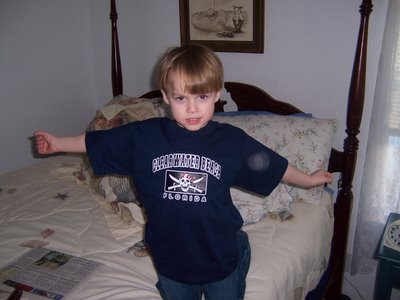

 Historic Landmark
Historic Landmark Receiving Vault; in the days of hand digging graves, the receiving vault was used for those bodies that could not be buried in the winter when the grounds were frozen. The bodies were held in vaults such as this one until spring soften the frozen ground.
Receiving Vault; in the days of hand digging graves, the receiving vault was used for those bodies that could not be buried in the winter when the grounds were frozen. The bodies were held in vaults such as this one until spring soften the frozen ground. 






 The Kane Family Vault
The Kane Family Vault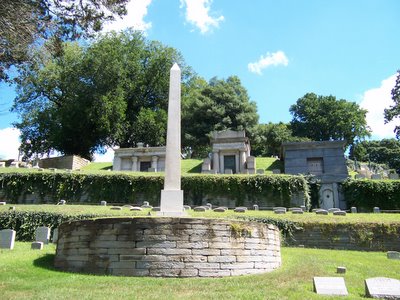
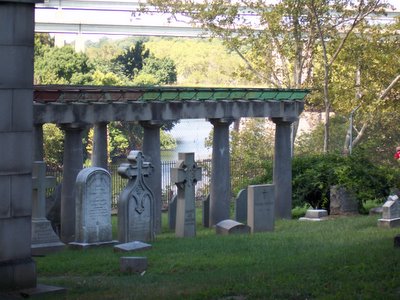

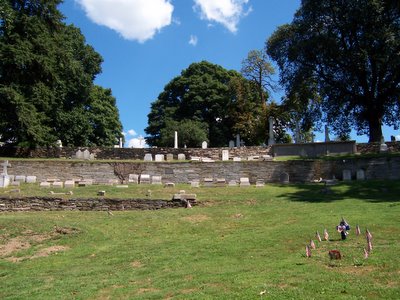

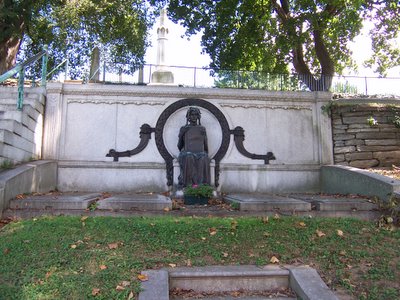

 General George Gordon Meade and Family Burial Plot
General George Gordon Meade and Family Burial Plot
 A Typical Family Burial Plot in the 19th Century
A Typical Family Burial Plot in the 19th Century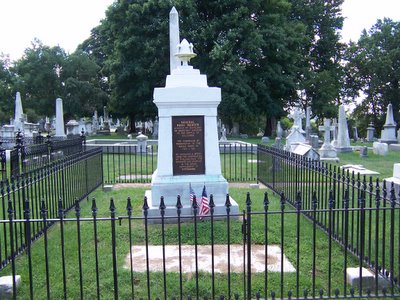
Hugh Mercer; personal physician of George Washington in the French and Indian War; Later served under Washington in the Revolutionary War; Fought at Trenton and died at Princeton.
In order to appreciate the full architectural and historical beauty of the cemetery, click on the picture to enlarge it.
 166 Roxborough Avenue Philadelphia PA. 19127
166 Roxborough Avenue Philadelphia PA. 19127 John Schroeder 1915-1969, son of Charles and Mary (Mervine) Schroeder
John Schroeder 1915-1969, son of Charles and Mary (Mervine) Schroeder Charles Schroeder 1886-1945, Mary (Mervine) Schroeder 1889-1979
Charles Schroeder 1886-1945, Mary (Mervine) Schroeder 1889-1979 John Weleski 1904-1954 and Marie (Schroeder) Weleski 1906-1945, daughter of Charles and Mary (Mervine) Schroeder
John Weleski 1904-1954 and Marie (Schroeder) Weleski 1906-1945, daughter of Charles and Mary (Mervine) Schroeder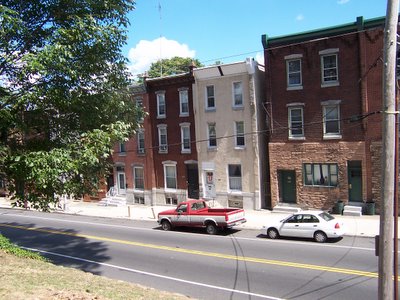 Click on the picture to enlarge it. When you have the red brick house with the black door in focus, magnify the house but focus on the third floor window on your right. What do you see?
Click on the picture to enlarge it. When you have the red brick house with the black door in focus, magnify the house but focus on the third floor window on your right. What do you see? When my mother was a little girl, this area once located next to Bernard and Mary Cafferty's house was a coal yard. My mother remembers the days when money was so tight that there were times when my grandmother asked her to walk by this coal yard and see if she could find any loose pieces of coal outside the gates for their own furnace.
When my mother was a little girl, this area once located next to Bernard and Mary Cafferty's house was a coal yard. My mother remembers the days when money was so tight that there were times when my grandmother asked her to walk by this coal yard and see if she could find any loose pieces of coal outside the gates for their own furnace. Bernard & Mary's House
Bernard & Mary's House 3827 Terrace Street Phidelphia PA 19127
3827 Terrace Street Phidelphia PA 19127This is the house where Daniel and Catherine (known as Aunt Kate) lived with their daughter Helen and niece (Anna Marie McCaffery). The next paragraph is taken from "A Journey into the Past".
Life with Aunt Kate was nothing less than cruel. Discipline was swift, fierce and physical. I remember having many conversations with grandmom (Anna) about her life with Aunt Kate. Her memories were very painful. She told me about a house that to the outside world looked perfect. The house on 3827 Terrace was always neat and clean with its polished table tops and fine Irish linen. Family portraits decorated the living areas. All appeared very normal. There was the father and mother and the two girls, Anna and her younger cousin Helen. They attended Catholic school. They attended Sunday Mass. But what the outside world could not possibly know is the cruelty that went on behind closed doors. Aunt Kate had severe mood swings. She also liked to have a drink and the story goes that when prohibition went into effect, Aunt Kate was known to hide her alcohol in the backyard. Whether Aunt Kate had a problem with alcohol or whether she was manic depressive, we will never know for sure but what we do know for sure it that Aunt Kate beat Anna. Most of the time the beatings took place in the basement of the house. Sometimes Anna was tied to a chair. The beatings occurred when Anna did not perform her chores to Aunt Kate’s satisfaction such as the tables were not polished correctly or there was lint on the floor.
Anna endured these beatings for the next eight years until the day she came home from school and an angry and out of control Aunt Kate grabbed Anna as she walked in the door. She beat Anna until she was covered in blood. Anna ran out the door and to a neighbor’s house. Hurt and crying she was brought into the house. From that point on, Anna lived at 3902 Terrace in the care of the Gallagher family.

